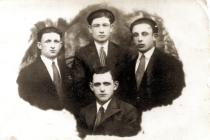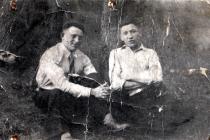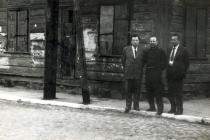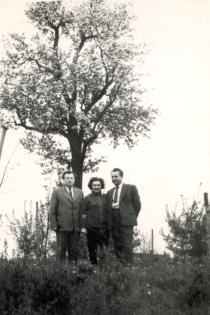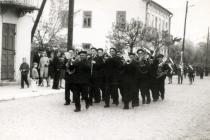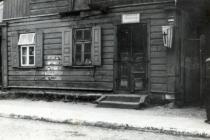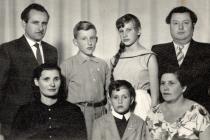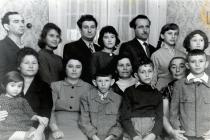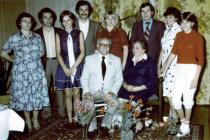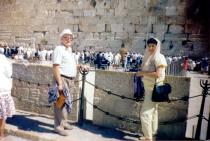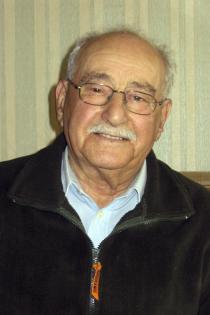This is a photo of one of the buildings in Losice, where before the war a prayer house of the Orthodox Jewish community was located. After the war in the same building there was a Christian carpenter's workshop, where mostly coffins were produced. That's why you can see a cross next to the door. I took this photo while visiting Losice at the end of the 1960s.
I only went back to Losice once after the war. That was in 1968 or '69, sometime around the end of the 1960s. Josef, the eldest of the Mokobocki brothers, had come to Poland. He came to see me first of all, and then we went to see Dora together, who lived in Warsaw at the time. Before the war, you see, Josef had been friendly with Dora, he'd belonged to the same party - it was the Bund, I think - as her husband Herszko. She said that since we were so close, perhaps we could go to Losice. And because we had the use of Mokobocki's car, it was easy. That was the last time I was there.
Losice was a Jewish town - a shtetl. It was a small town - about 4,000 inhabitants, of which I joke that 99.9 percent were Jews and the rest Poles. [Editor's note: in Losice the Jewish population numbered 2,708 (70% of total population) in 1921, and 2,900 before the outbreak of World War II.] All around the square only Jews lived, and in other quarters Jews and non-Jews lived mixed together. Most of them were very poor, but there were rich ones too. They had wood yards; one was very rich - I can't remember his surname or his first name any more. And the fancy goods stores, and various others. The rich ones stood out, and that's why the Poles have it in their minds that Jews are rich. But no-one saw the poverty. The Jews married among themselves for the most part, but I can vaguely remember that once the daughter of an orthodox Jew married a Pole, and they had to leave Losice, because her father simply renounced her.
There was one synagogue in town, a splendidly sacral, Jewish building, which had a different interior to all the other buildings. It was a stone building, and inside there were wonderful frescoes depicting Palestine, and in particular Jerusalem. Those frescoes, if I remember correctly, were the handiwork of an eminent Italian painter, but unfortunately I can't remember his name.
The synagogue was open on holidays and Saturdays to all Jews, but the Orthodox ones had these places of their own where they met, these shtibls. Those shtibls were mostly in private houses. There was a private Jewish school as well, I can't remember if it was an elementary school or a gymnasium that boys from Orthodox families went to. They could study in Yiddish and the prayers in Hebrew there, but it was not a yeshivah. And nearby, on the square, lived the rabbi, on the second floor, I think.

